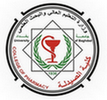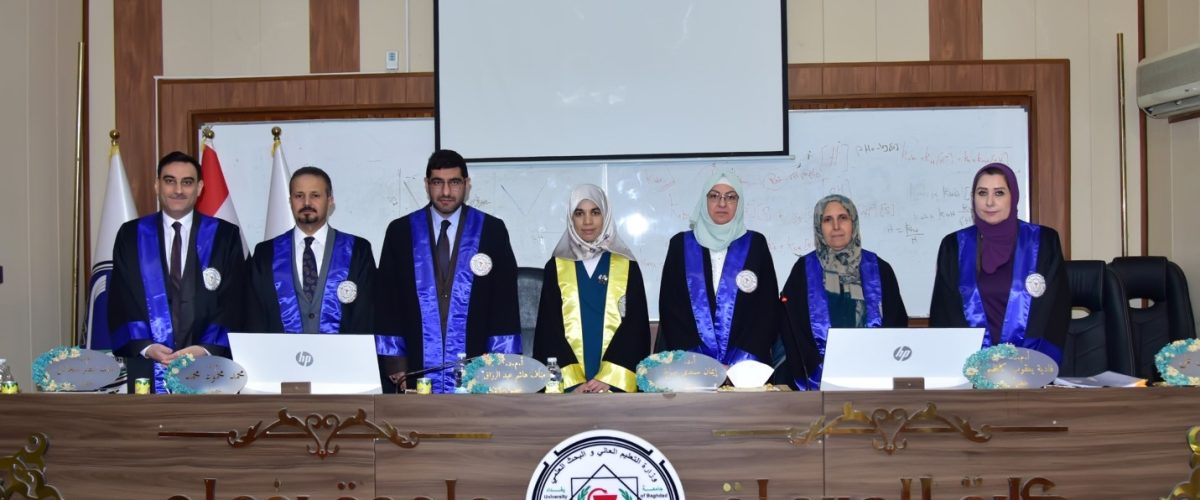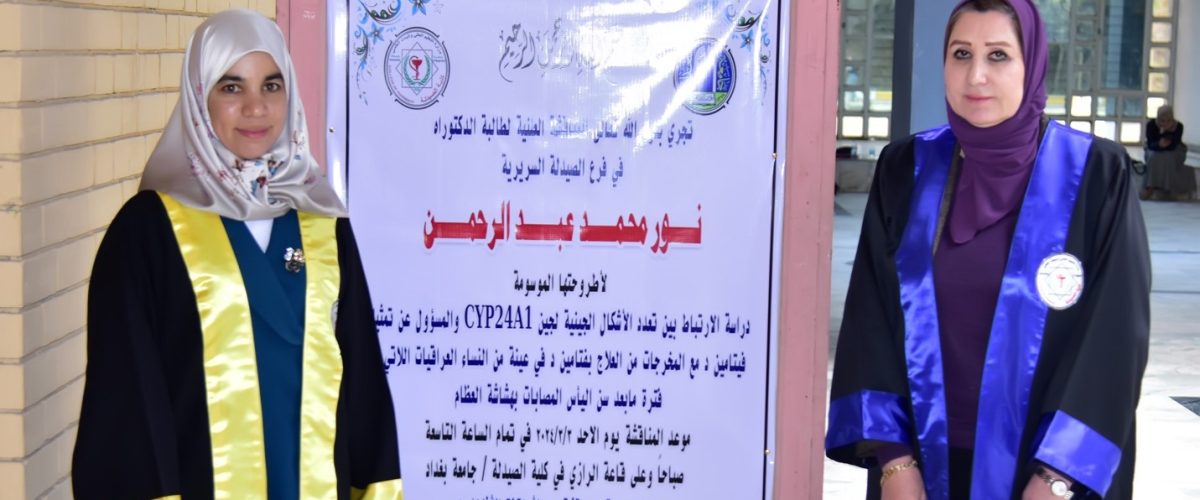The College of Pharmacy discussed the PhD dissertation entitled “Study the Association between Polymorphism of the Gene Coding for VDR and CYP24A1 Enzyme and Outcomes of Treatment with Vitamin D in a Sample of Iraqi Postmenopausal Osteoporotic Women” by the student Noor Mohammed Abdulrahman and the supervisor, Professor Dr. Shatha Hussein Ali, at the Clinical Pharmacy Department. The study aimed to determine the percentage of genetic polymorphisms in the genes responsible for the vitamin D receptor and the CYP24A1 enzyme in a sample of postmenopausal Iraqi women who suffer from osteoporosis and the role of these genetic polymorphisms in the response to vitamin D after taking it for a certain period as well. The study aims to study the association between bone density among study participants and bone metabolism parameters. The study included a sample of postmenopausal women (30 participants who did not suffer from osteoporosis and 40 patients who had osteoporosis). The women with osteoporosis took 50,000 IU per week for eight weeks. They were followed up during this period with measurements of vitamin D levels and bone turnover markers before starting vitamin D and after eight weeks. The proportions of genetic polymorphisms (rs2762934, rs4809957, and rs731236) were also measured, as was the extent of their relationship with the risk of osteoporosis. The study concluded that the presence of A/A at rs2762934, G/G at rs4809957 belonging to the CYP24A1 gene, and G/G at rs731236 for the vitamin D receptor had the characteristic of responding to vitamin D after taking it for eight weeks. Also, bone turnover markers (osteocalcin, deoxypyridinoline, and pro-collagen-1) showed a change in their levels during the follow-up period, but they were not statistically significant and had a negative relationship with the bone density measure. The study recommended including a larger sample of patients to demonstrate the benefit of the therapeutic effects of vitamin D on osteoporosis and applying this study to women who do not suffer from osteoporosis and have osteopenia to find out the protective effect of vitamin D and its relationship to the genes responsible for the risk of developing osteoporosis. Also attempting to study other parameters that may contribute to the development of osteoporosis.




